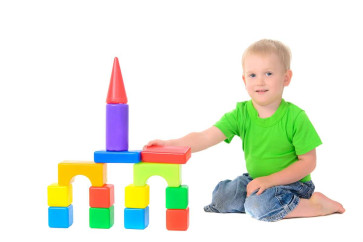In today's digital age, managing screen time for children is one of the most significant challenges parents face. With digital devices playing a central role in education, entertainment, and communication, it can be hard to determine how much screen time is too much and how to balance it with other essential activities. This guide will provide a thorough approach to managing screen time, addressing common concerns and offering practical solutions that include engaging alternatives like educational toys from Alphabet Trains & Toys.
The Growing Challenge of Screen Time Management
1. The Appeal of Screens:
- Entertainment Value: Screens offer endless entertainment options, from video games to streaming services, which can captivate children's attention for hours.
- Educational Content: Many parents feel conflicted about limiting screen time because some content is educational. This leads to the question: "Is educational screen time different from entertainment screen time?"
2. The Need for Balance:
- Health Concerns: Excessive screen time is associated with sleep disturbances, obesity, and behavioral issues. Parents worry about how to protect their children from these risks.
- Impact on Development: There's a concern that too much screen time might hinder social skills, physical development, and creativity.
3. Parental Dilemmas:
- Setting Boundaries: Parents often struggle with setting appropriate limits. How much screen time is too much? Should the rules differ on weekdays versus weekends?
- Handling Resistance: Many parents face resistance from their children when trying to limit screen time. How can this be managed effectively without constant conflict?

Comprehensive Solutions for Effective Screen Time Management
1. Set Clear and Age-Appropriate Limits:
- For Toddlers (Ages 2-5): Limit screen time to one hour per day of high-quality programming. Engage your child in other activities like reading or playing with toys that stimulate imagination and motor skills.
- For School-Aged Children (Ages 6-12): Encourage no more than 1-2 hours of screen time per day, including both educational and entertainment content. Prioritize activities that promote physical activity, creativity, and social interaction.
- For Teens (Ages 13-18): While teens may require screen time for school and socializing, it’s essential to ensure they also engage in physical activity, sleep adequately, and participate in non-screen activities.
2. Incorporate Educational Alternatives:
-
Redirect your child's attention from screens to engaging, educational toys that promote learning and development. Here are some top educational toys available at Alphabet Trains & Toys that can help reduce screen time:

-
Guidecraft PowerClix® Frames - 48 pc. Set: This magnetic building set fosters creativity, problem-solving, and spatial awareness. It’s perfect for children who might otherwise turn to a screen for entertainment.
- Maple Landmark Wooden Name Train: These personalized toys help with letter recognition and spelling, offering an interactive way to learn while playing.
-
Maple Landmark Figure 8 Wooden Rail Track: This classic wooden train set encourages imaginative play and fine motor skill development, providing an engaging alternative to screen time.
3. Understand the Role of Educational Screen Time:
- Differentiate Between Passive and Active Screen Time: Not all screen time is created equal. Educational content that encourages interaction (e.g., educational games or apps) is more beneficial than passive screen time (e.g., watching videos). However, even educational screen time should be balanced with other activities.
- Incorporate Educational Content Mindfully: When using screens for educational purposes, make sure to choose high-quality, age-appropriate content. Set specific goals for what your child should learn or accomplish during their screen time.
4. Create Screen-Free Zones and Times:
- Designate Screen-Free Areas: Establish certain areas of your home, like the dining room or bedrooms, as screen-free zones to encourage other activities.
- Implement Screen-Free Times: Set aside specific times, such as during meals or an hour before bedtime, as screen-free periods to promote family interaction and better sleep habits.
5. Plan and Encourage Screen-Free Activities:
- Engage in Physical Activities: Encourage outdoor play, sports, or family walks to get your child moving and reduce their dependence on screens.
- Foster Creativity: Encourage activities like drawing, building, or crafting. Toys like the ones available at Alphabet Trains & Toys can be an excellent way to stimulate creativity and hands-on learning.
- Read Together: Reading is a great way to bond and develop your child's literacy skills. Make reading a daily habit, whether it’s with books or storytelling toys.
6. Handle Resistance with Empathy and Consistency:
- Set Expectations Early: Discuss screen time rules with your child and explain why these limits are important. Involve them in creating a schedule to give them a sense of control.
- Be Consistent: Consistency is key to managing screen time effectively. If your child knows what to expect, they are less likely to resist the rules.
- Use Positive Reinforcement: Praise your child when they follow screen time rules or choose to engage in non-screen activities. Reward systems can also be helpful.
7. Be a Positive Role Model:
- Limit Your Own Screen Time: Children often mimic their parents' behavior. If they see you limiting your screen time and prioritizing other activities, they are more likely to do the same.
- Engage in Non-Screen Activities Together: Spend quality time with your child doing activities that don’t involve screens, such as playing board games, building with toys, or cooking together.
Conclusion
Effectively managing your child's screen time requires a balanced approach that includes setting clear limits, offering engaging alternatives, and being a positive role model. By integrating these strategies into your daily routine, you can help your child develop healthy screen habits that support their overall growth and well-being.
Remember, the goal is not to eliminate screen time entirely but to ensure it is balanced with other enriching activities. Educational toys from Alphabet Trains & Toys are an excellent way to provide children with the stimulation and learning they need while reducing their dependence on screens. By addressing all concerns and offering practical solutions, you can create a well-rounded environment that nurtures your child’s development and happiness.








